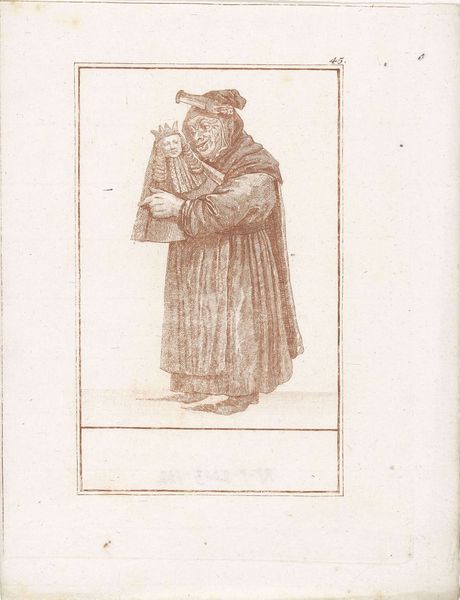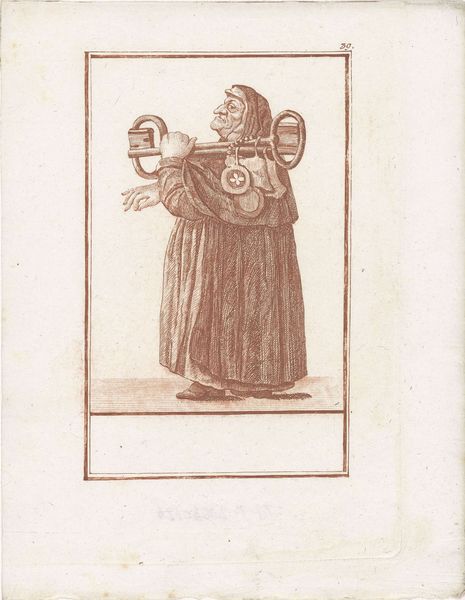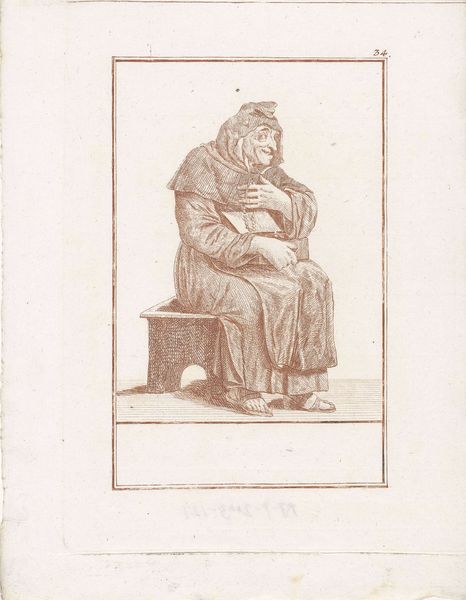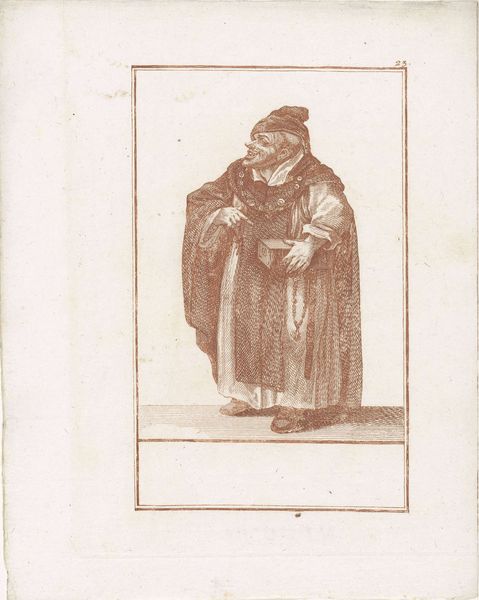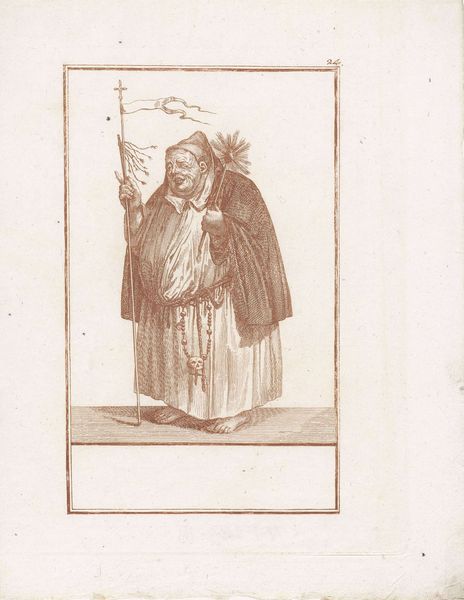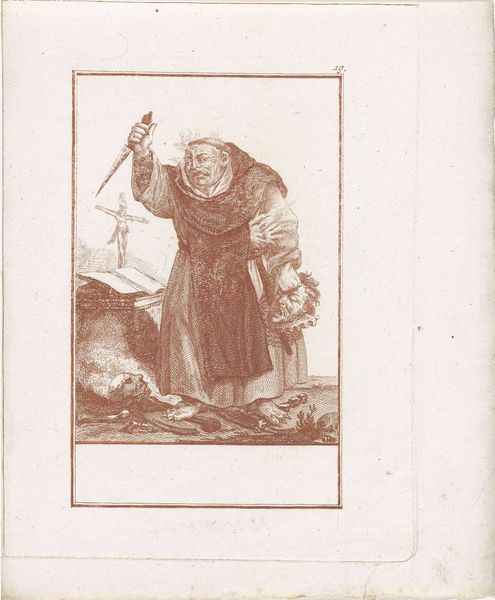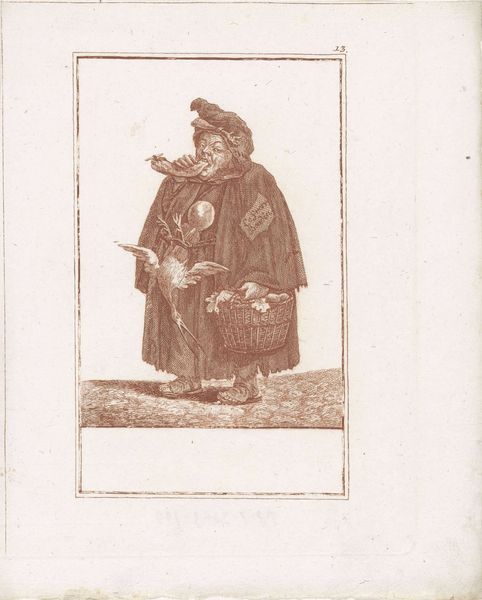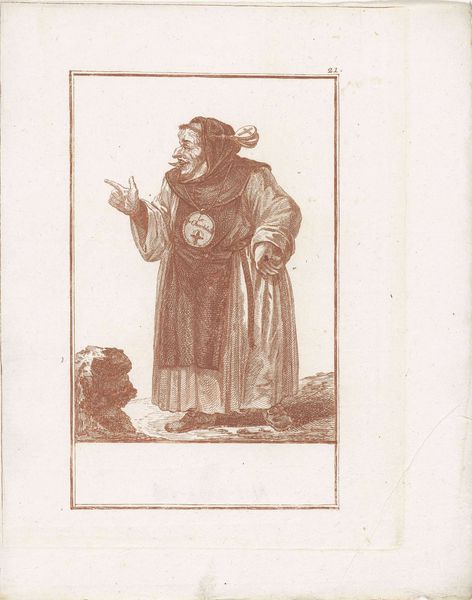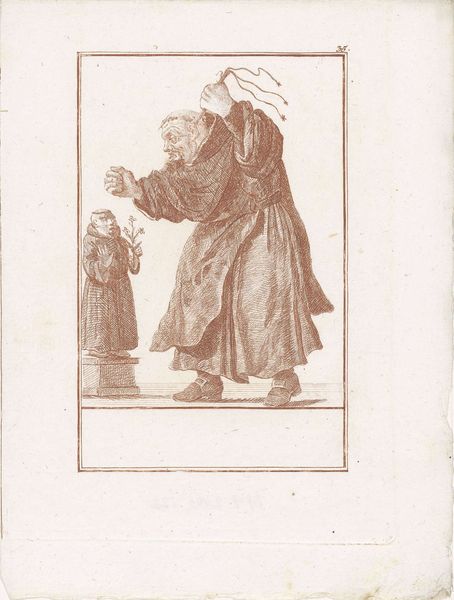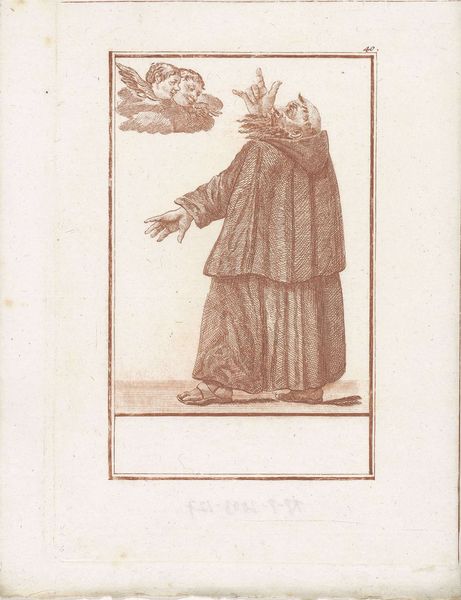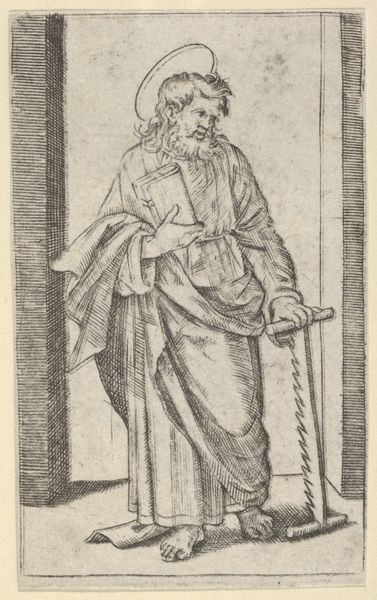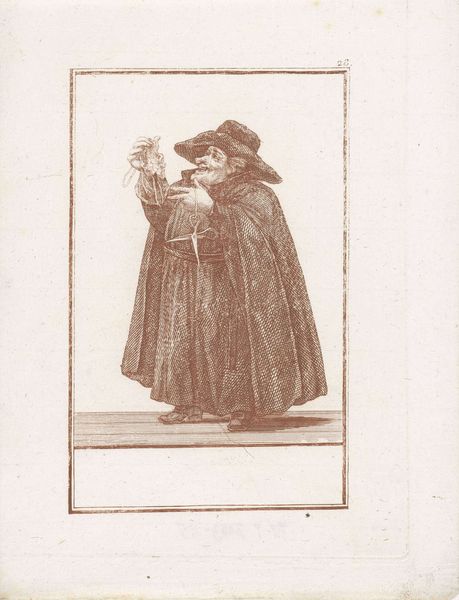
print, etching
#
portrait
# print
#
etching
#
genre-painting
Dimensions: height 233 mm, width 175 mm
Copyright: Rijks Museum: Open Domain
Curator: Ah, yes, "Monk with Mask in Hand," etched by Jacob Gole in 1724. A fascinating genre painting, wouldn’t you agree? Editor: My first impression is just how delicately rendered the entire scene is; a masterful exercise in lines and crosshatching. What is immediately compelling to me, though, is the duplicity inherent in the image—that ambiguous interplay between identity and facade. Curator: Precisely. Gole captures a figure clad in monastic garb, seemingly content, even jovial. Yet, this individual holds a mask pressed to his face, its visage solemn, almost melancholic. The tension between the man’s perceived exterior and the mask’s implied inner self is what constitutes the picture's symbolic crux. Editor: Indeed, this mask operates as an object imbued with historical significance, beyond the image itself. Throughout history, masks have served diverse ritualistic purposes—often veiling one's self in imitation, performance, and potent allegory. Could Gole be suggesting an analogy here, implying that the monk, in embracing his chosen monastic identity, also adopts a certain 'mask'? Curator: Intriguing—or it could be an indictment. The attire is almost incidental; notice the carefully constructed formal frame. The etching showcases how an arrangement of carefully placed parallel lines is enough to make up the whole person and setting of the image. Editor: A valid point. This reminds me of the works of artists such as Bosch and Bruegel the Elder who commonly use monastic figures to reflect, question, and often satirize the morals of society at large. Here too, the 'genre painting' label seems less definitive, and prompts further thought and discussion. Curator: Well said. It underscores how much can be conveyed through suggestion, particularly through contrasting forms and evocative symbolism. An etching—its seeming simplicity notwithstanding—invites prolonged observation, precisely to engage with these underlying tensions and historical cues. Editor: A sentiment that surely echoes across our varied interpretations, encouraging us to confront those uncomfortable dualities—the inherent frictions that arise as we reconcile personal truths with prescribed social roles.
Comments
No comments
Be the first to comment and join the conversation on the ultimate creative platform.
